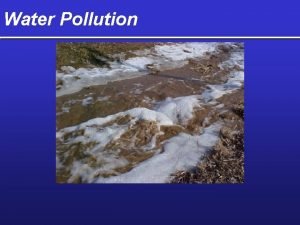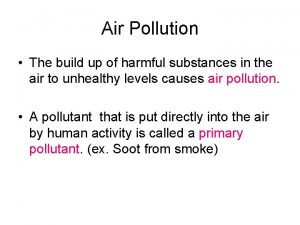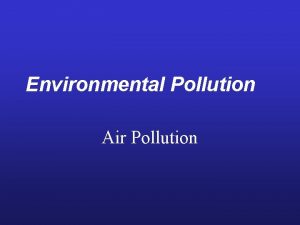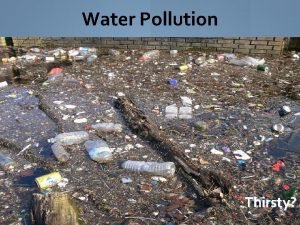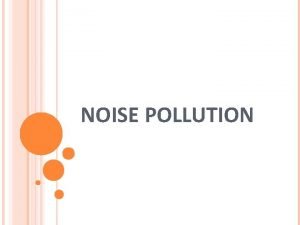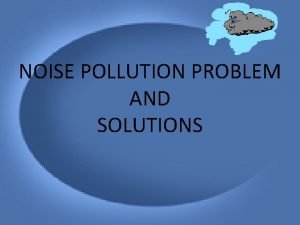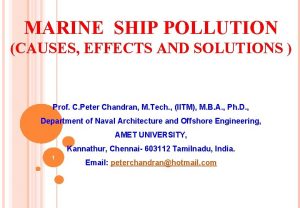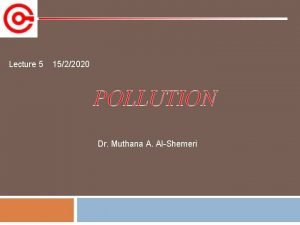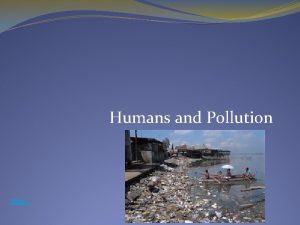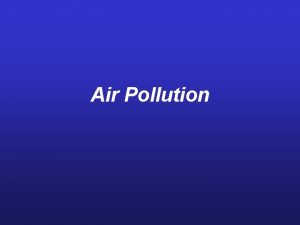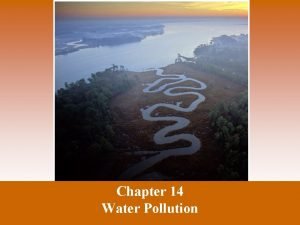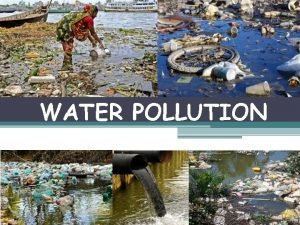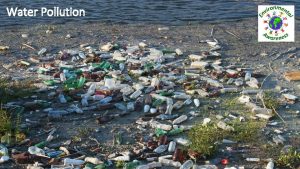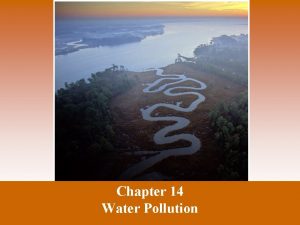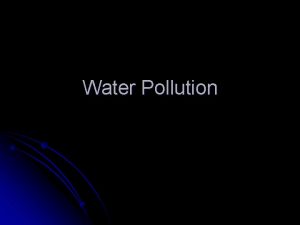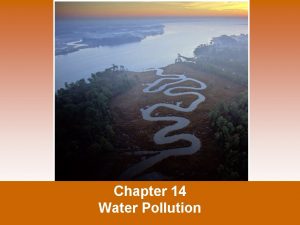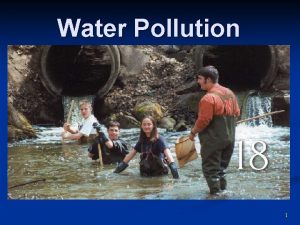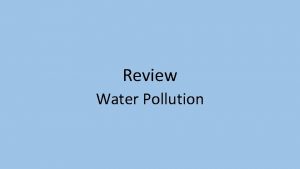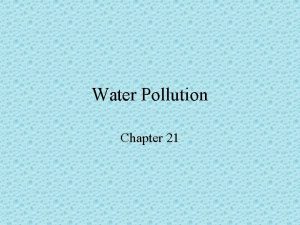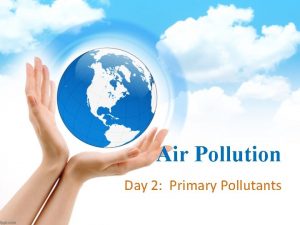Major Water Pollutants Leading Causes of Water Pollution
















- Slides: 16

Major Water Pollutants

Leading Causes of Water Pollution n Most water pollution comes from: – Agriculture § Fertilizers, pesticides, bacteria, food wastes – Industrial Facilities § Sewage Treatment § Inorganic and organic chemicals – Mining § Sediment erosion, toxic chemical runoff/leaching

Agriculture n Nutrient Runoff – Pesticides – Fertilizers & Manuren Infectious Diseases n Sedimentation – Overgrazing n Chemical Pollution

Industrial n Organic & Inorganic Compounds n Heavy Metals n Thermal Pollution

World Wide Disposing sewage Drinking Same Water Source Bathing Washing

Wastewater n Two main systems: – Septic Systems – Sewage Treatment Plants

n Septic Tank Septic Systems – Large container holding wastewater from a household – Two parts: § Sludge – bottom layer of solids § Septage – middle liquid layer – More bacteria and nutrients n Leach Field – Septage distributed into soil

Sewage Treatment Plants n Urban areas

Testing for Water Pollutants n Temperature n Dissolved Oxygen n BOD n p. H n Nitrates n Phosphates n Turbidity n Indicator species n Coliform bacteria (E. coli)

Temperature n Range of Tolerance n Inverse relationship with Dissolved Oxygen (DO)

Dissolved Oxygen n Amount of oxygen available n Range 5 ppm and up n Things affecting DO: – Water movement higher DO – Decomposition lower DO – Temperature Inverse relationship

Biochemical Oxygen Demand (BOD) n Amount of oxygen a water system uses over a period of time at a specific temperature n Low BOD = Low Pollution n High BOD = High Pollution – High microbial activity leads to high BOD


p. H n Determines solubility of nutrients n Affects organism physiology n Species dependent

Nitrate & Phosphate n Limiting nutrients in aquatic ecosystems n Can result in extreme algal growth – Algal blooms – Red tide

Turbidity A measure of the degree to which the water loses its transparency due to the presence of suspended particulates. n Affects sunlight penetration n Affects predator/prey interactions n Affects gill function
 Planting more trees
Planting more trees Primary pollutants and secondary pollutants
Primary pollutants and secondary pollutants What are the secondary air pollutants
What are the secondary air pollutants Major air pollutants
Major air pollutants Bobbin leading principle
Bobbin leading principle Examples of point source pollution
Examples of point source pollution Water and water and water water
Water and water and water water Pollution causes effects and solutions
Pollution causes effects and solutions Noise pollution solutions
Noise pollution solutions Problems of noise pollution
Problems of noise pollution Pollution causes effects and solutions
Pollution causes effects and solutions Chapter 12 section 3 acid precipitation
Chapter 12 section 3 acid precipitation Land water and air pollution
Land water and air pollution Problems of noise pollution
Problems of noise pollution Chapter 12 air section 1 what causes air pollution
Chapter 12 air section 1 what causes air pollution Proximate and ultimate causes of behaviour
Proximate and ultimate causes of behaviour Polygyny in animals
Polygyny in animals
